I love the sand dunes in Death Valley. As I wrote in this recent post, they’re like a giant visual playground, with lines, curves, patterns, and textures everywhere.
But there’s more to Death Valley than dunes. It’s a big place (the largest national park in the lower 48 states), and it takes time to explore this vast area, but photogenic landscapes abound.
One of the most striking features of Death Valley is the lack of vegetation. Now don’t get me wrong – Death Valley has a wonderful and diverse array of plants. Some years bring great flower displays, and you can even find limber pines and bristlecone pines at the highest elevations. But there are also vast areas of naked earth. In the badlands, or out on the salt flats, you can see large swaths of ground with scarcely a shrub or blade of grass. This is landscape photography at it’s most elemental, with only bare earth and sky as subjects. You can concentrate on the patterns, textures, forms, and colors of the rocks and minerals themselves, unobscured by vegetation.
The photograph at the top of this post was made just before our workshop, and features some of those sculpted badlands in the foreground. We were also lucky to have some great clouds and a colorful sunset that evening. I think this photograph also has a sense of depth, even though I used a telephoto lens (81mm on my 70-200mm zoom). The most common way to create a sense of depth in a landscape photograph is by using a wide-angle lens with an exaggerated, near-far perspective. But there are other ways to convey a sense of depth – something I talk about in this post from a couple of years ago.
The photograph above has a few of the elements I mention in that post. One of the best ways to create a sense of depth is through atmospheric effects, and here the distant mountains seem to “fade” as haze softens their contrast and reduces their color saturation. There’s also a foreground, middle ground, and background: the eroded hills at the bottom provide the foreground (not a close foreground, to be sure, but a foreground nonetheless), the salt flats beyond are the middle ground, and the distant mountains are the background. And the succession from foreground to middle ground to background wouldn’t be visible without an elevated camera position.
I had a great time photographing the austere-but-beautiful landscapes of Death Valley during our recent trips there, and you’ll find some other, non-sand-dune photographs from the park below. Then, after our last trip to Death Valley, Claudia and I visited the Carrizo Plain. We went from one of the most austere landscapes on earth to a lush, verdant, flower-filled paradise in the space of a few days and a few hundred miles. That’s what I love about California! I’ll post some images from the Carrizo Plain soon.
— Michael Frye
Related Posts: A Photographer’s Playground; Creating Depth: Beyond the Wide-Angle Formula
Michael Frye is a professional photographer specializing in landscapes and nature. He is the author or principal photographer of The Photographer’s Guide to Yosemite, Yosemite Meditations, Yosemite Meditations for Women, Yosemite Meditations for Adventurers, and Digital Landscape Photography: In the Footsteps of Ansel Adams and the Great Masters. He has also written three eBooks: Light & Land: Landscapes in the Digital Darkroom, Exposure for Outdoor Photography, and Landscapes in Lightroom: The Essential Step-by-Step Guide. Michael has written numerous magazine articles on the art and technique of photography, and his images have been published in over thirty countries around the world. Michael has lived either in or near Yosemite National Park since 1983, currently residing just outside the park in Mariposa, California.

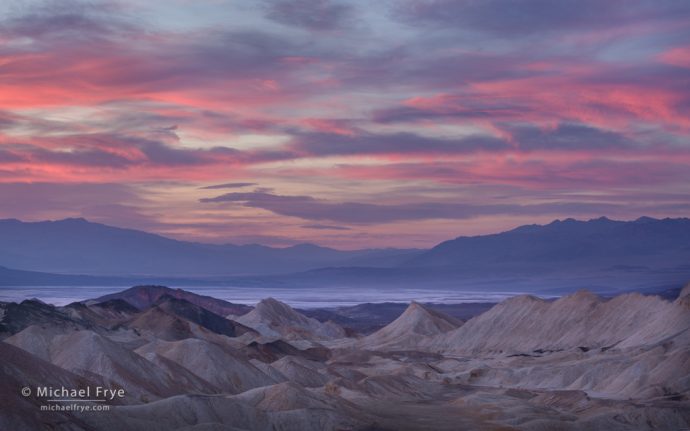
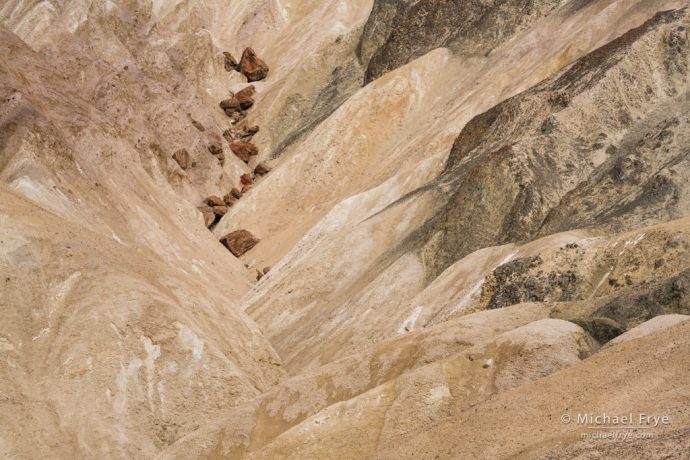
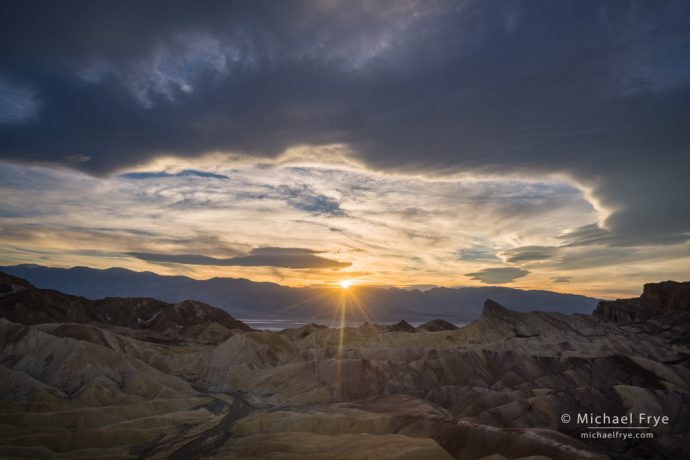
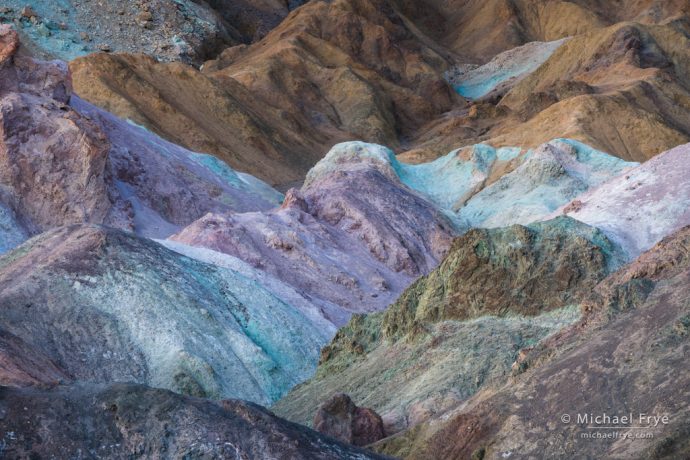
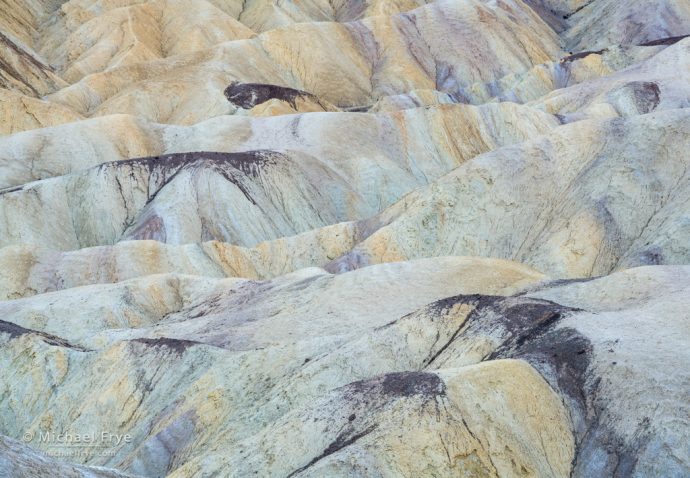
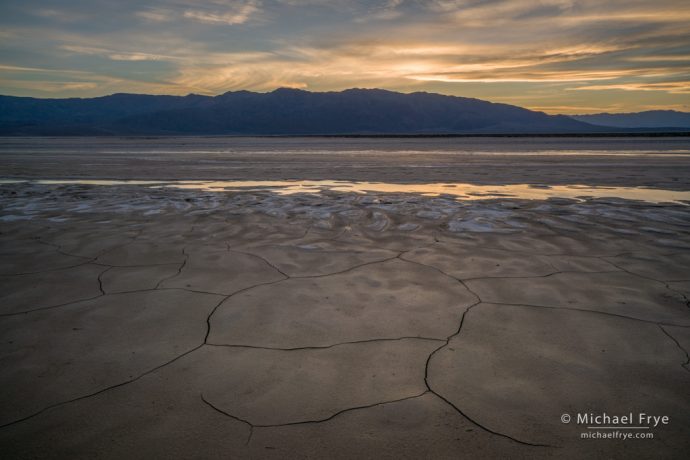
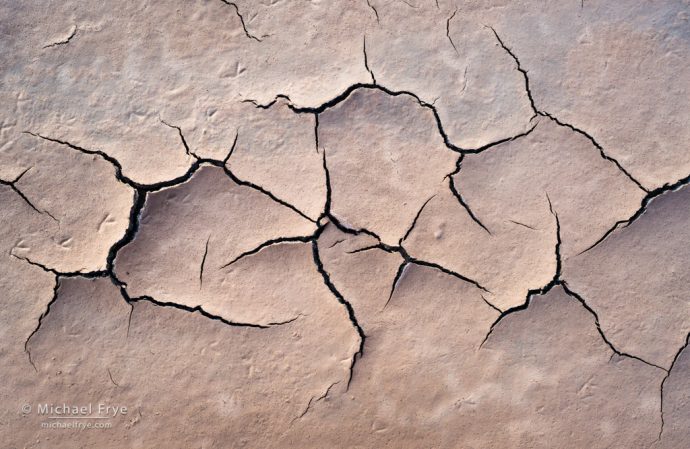








I’ve not yet visited Death Valley. From your photos it appears there’s a really diverse set of photographic opportunities. Really beautiful photos, Michael. The first image is just amazing, the soft pastel color palette is fantastic with the pinks, blues, and purples. As you said, the clouds are a very strong component of the image. Really nice. I also like the simplicity of the second image of boulders in the badlands. I’ll bet it was a great workshop!
I believe I was at Zabriskie Point when you and your class were there. The unusual cloud formation is the tip off. I actually have an iphone video of the sunset with you and your group briefly in the foreground.
Any way, I enjoy your work and see it on Facebook.
Thanks Bob. There were some great clouds that evening – hope you got some photos you like.